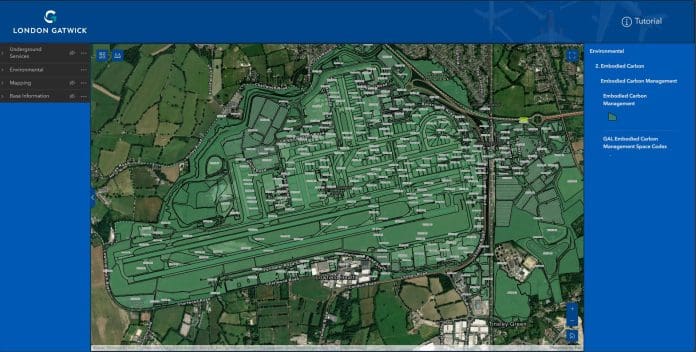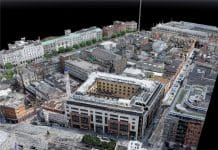Created using Esri’s GIS technology, London Gatwick’s new geospatial platform will support multiple operational areas at the airport, including engineering and environmental services
The Gatwick geospatial system is already making engineering and construction works safer by reducing accidental strikes on buried utilities and enabling better management of the airports biodiversity.
London Gatwick selected Esri’s GIS (Geographic Information System) technology following a competitive tender.
By integrating all spatial data into a single view, combined with advanced spatial analysis tools, mobile apps and dashboards, the Esri platform supports collaborative insights and decision-making across the airport.
Up to 50 projects are ongoing at London Gatwick at any time
The geospatial platform contains critical infrastructure information spanning the 70-year history of the airport, including BIM, CAD, utilities, environmental, aerial photography and legacy data.
Field engineers, third party contractors and major consulting firms all use the same single view of data, accessible on any device, when planning excavations across the 1,600-acre site.
Supporting the airport’s biodiversity net gain target of 2030
London Gatwick is using the geospatial platform to support its delivery of a biodiversity net gain at the airport by 2030.
Within the airport boundaries are 75 hectares of woodlands, grasslands and wetlands, inhabited by hundreds of species of mammals, birds, insects and bees.
Environmental data in the GIS includes environmental stewardship areas, notable birds, protected, rare or invasive alien species and bat box locations.
The system also visualises the estimated embodied carbon of built assets.
Insights from the GIS allow London Gatwick to plan works around any environmentally sensitive sites to minimise impact and seek ways to bring additional benefits, such as improving biodiversity. The embodied carbon data allows users to see the carbon ‘price’ of assets, supporting sustainability decisions by showing the potential carbon emissions of demolitions or new construction.
Plans to expand the Gatwick geospatial platform are already in place
Simon Richardson, digital information lead, London Gatwick Airport, commented: “The new GIS supports our Master Plan, which includes delivering efficiencies through new technologies and process improvements, while bringing passenger service benefits and protecting the environment we operate in.
“It provides an immediate understanding of operational infrastructure, supporting faster and more informed decisions, which are integral to the running of the airport.”
“We expect the geospatial platform to grow significantly within the next 12 months,” Richardson continued. “The Esri GIS has given us the foundation to create a digital twin. As a complex site with over 70 years of history, we are building a virtual representation of what has previously been built along with future plans, which helps manage the airport’s development.”

















